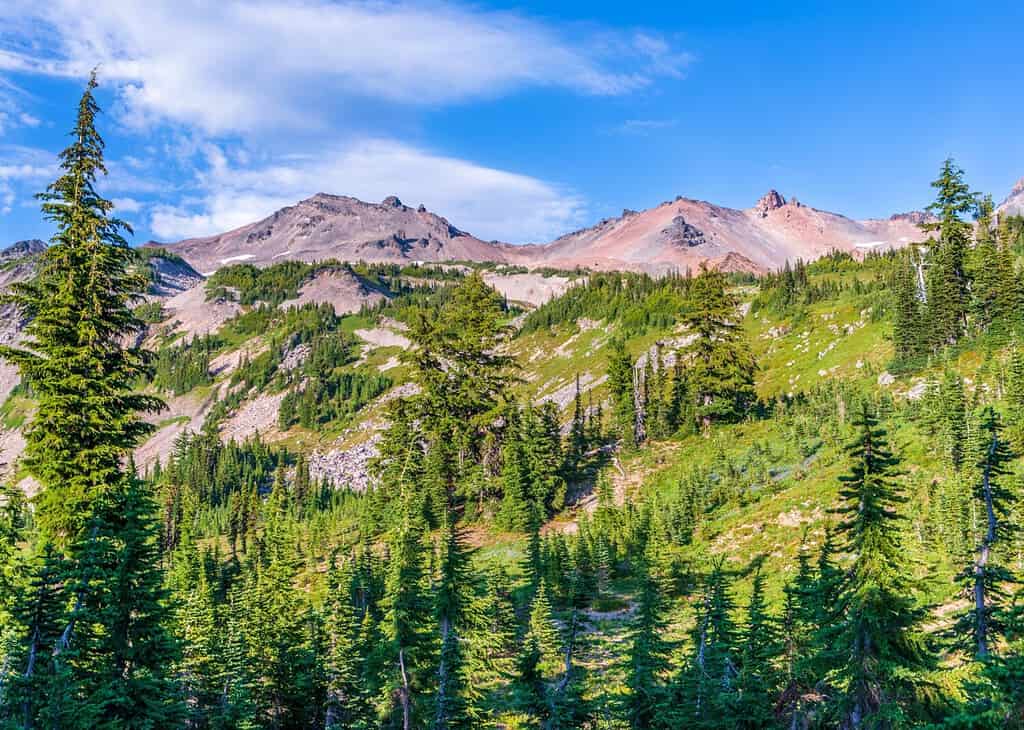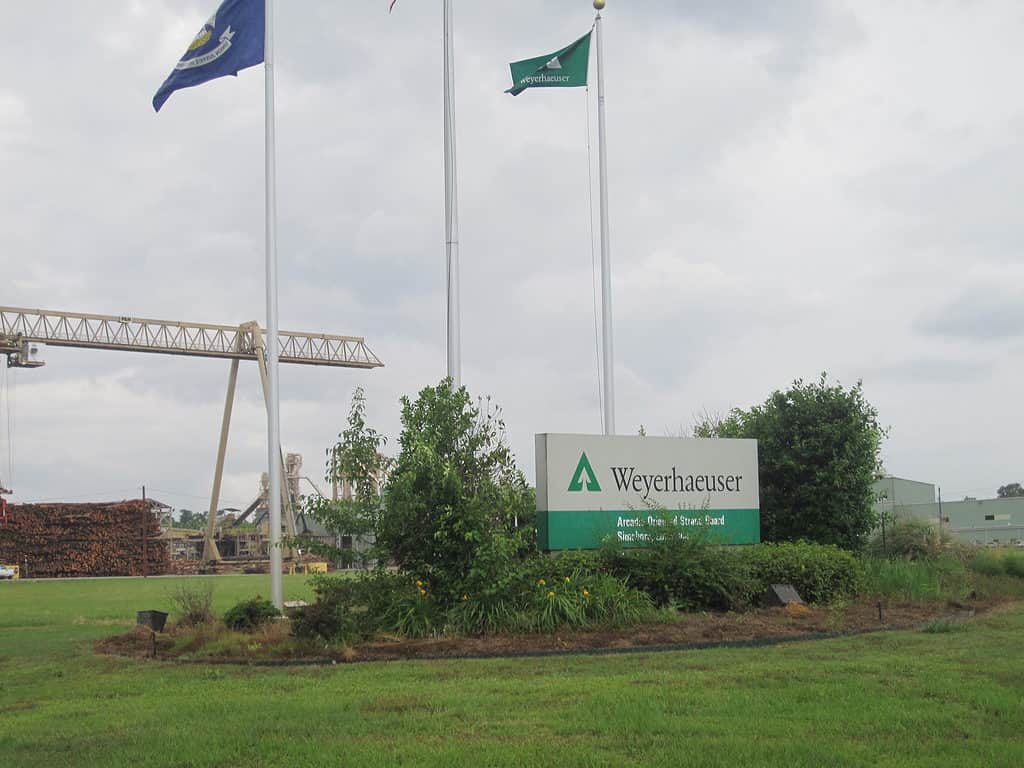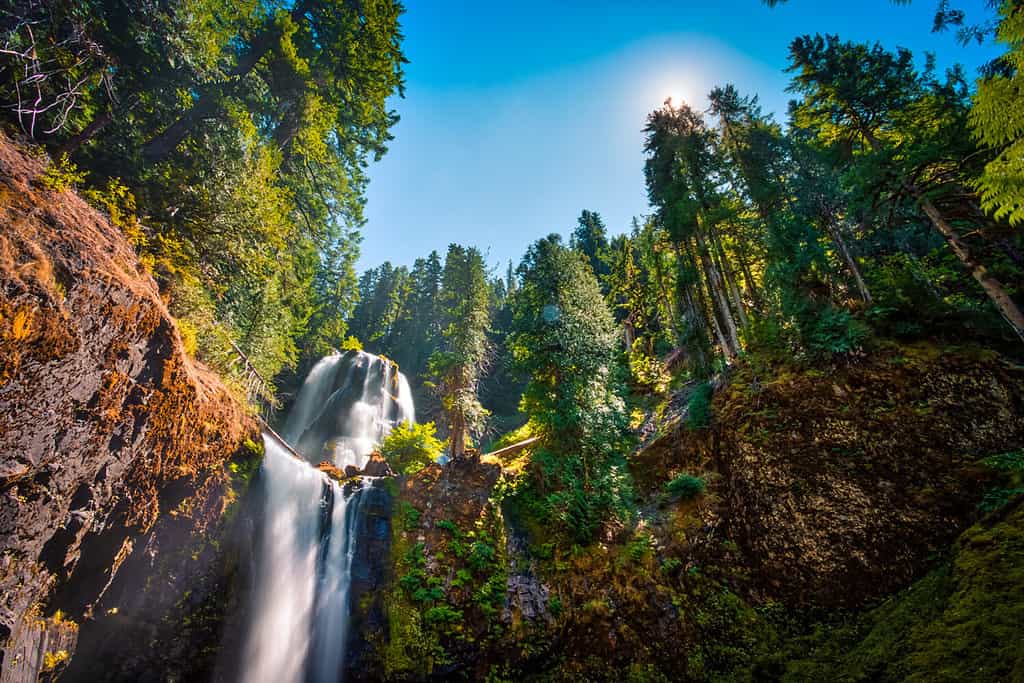Although Washington is the 18th largest state by total area (including water), it only ranks as the 20th largest by land area. Washington is made up of 66,455.52 square miles of diverse landscape, from the Cascade Mountains to the Hoh Rainforest. While some of the earliest American settlements of the state were established around Puget Sound in the early 1800s, today, most of the land is privately or federally owned. But, Washington’s largest private landowner owns 900,000 acres of it.
How Much Does the Federal Government Own?

Washington became a state in 1889, making it the 42nd state to join the Union. The state is named in honor of President George Washington.
©J-B-C/Shutterstock.com
Overall, the total land area of the United States is 2.27 billion acres, of which the federal government owns about 640 million acres. That’s about 28 percent of the total land, making the federal government the largest landowner in many states.
And, as far as federal land ownership goes, Washington State ranks as the 12th in the nation. Out of the 42,693,760 acres in Washington, the federal government owns 12,173,814 acres of it. So, about 28.5 percent of Washington’s total land is under the management of the federal government. With the establishment of national parks, forests, grasslands, and other areas of federal protection, 238.4 million acres make up USDA Forest Service lands across the country.
Who is the Largest Private Landowner in Washington?
The Weyerhaeuser Company, a timberland company based in the United States, owns more than 900,000 acres of land in the state of Washington. Nationally, the Weyerhaeuser Company owns more than 12.4 million acres.
Where Is the Largest Landowner Located?

The Weyerhaeuser Company’s first headquarters were established in 1911 in Tacoma, Washington. Today, the company is headquartered in Seattle.
©VDB Photos/Shutterstock.com
The Weyerhaeuser Company’s headquarters are in Seattle, Washington. They also have 86 other office locations across the United States.
History of the Weyerhaeuser Company

The Weyerhaeuser Company has been successfully manufacturing wood products for over a hundred years.
©Marko Aliaksandr/Shutterstock.com
In January 1900, Frederick Weyerhaeuser along with 15 other partners, bought 900,000 acres of timberland from the Northern Pacific Railway. At the time, this was the largest private land transaction to take place in American history. And, this was the beginning of the Weyerhaeuser Company. Two years later, the company bought a mill in Everett, Washington. And, in 1911, the Weyerhaeuser Company’s first headquarters were established in Tacoma.
More noteworthy was in 1929 when the company constructed the world’s largest sawmill at the time in Longview, Washington. In 1963, the company was publicly listed on the New York and Pacific stock exchanges. So, instead of being a primarily self-financed company, they pivoted to being publicly financed. Two years later, the Weyerhaeuser Company branched out and established the company’s first Canadian sawmill in Kamloops, British Columbia. The bleached kraft pulp mill produced products for quality printing and writing papers, along with linerboard and sack paper.
Also, a big milestone was in 1967, when the Weyerhaeuser Company rolled out its High Yield Forestry Plan. Informed by the 30 years of forestry research and field experience at the time, the plan enacted the planting of seedlings within one year of a harvest, soil fertilization, restoration of brushlands, and genetic improvement of trees.
The Weyerhaeuser Company Today

As of 2023, the Weyerhaeuser Company is worth $21.91 billion.
©Billy Hathorn, CC BY-SA 3.0 <https://creativecommons.org/licenses/by-sa/3.0>, via Wikimedia Commons – Original / License
Currently, the Weyerhaeuser Company owns over 12.4 million acres of land in the United States, along with 14 million acres of timberlands under long-term licenses in Canada. Not only is the company the largest landowner in Washington, but since merging with Plum Creek Timber Inc., it is also the largest in Arkansas, Georgia, Michigan, Montana, North Carolina, South Carolina, Vermont, and Wisconsin.
While the company has successfully manufactured wood products for over a century, it operates as a real estate investment trust, employing over 9,000 people.
Other Top Landowners of Washington

The Reed family is the ninth-largest landowner in the country, with 1.37 million acres across California, Oregon, and Washington.
©Stephen Moehle/Shutterstock.com
While the Weyerhaeuser Company is the largest landowner in Washington, second place goes to the Reed family. They own 770,000 acres of land and are based in Tacoma. As the ninth-largest landowner in the country, the Reed family mostly pursues land ownership as an investment. Currently, they own 1.37 million acres of land in the United States.
In third place for Washington land ownership is the Emmerson family, who also founded Sierra Pacific Industries. As the second-largest producer of lumber in the United States, the Emmerson family owns over 2.4 million acres of land. This makes the head of the Emmerson family, Red Emmerson, the largest private landowner in the United States. However, most of the retained land is in California.
The photo featured at the top of this post is © Sean Pavone/iStock via Getty Images
Thank you for reading! Have some feedback for us? Contact the AZ Animals editorial team.







